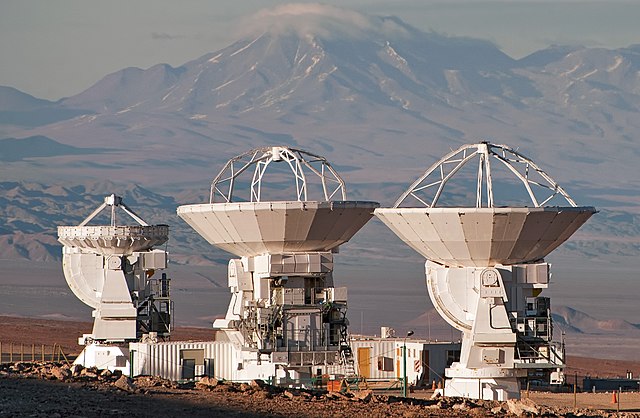A reflecting telescope is a telescope that uses a single or a combination of curved mirrors that reflect light and form an image. The reflecting telescope was invented in the 17th century by Isaac Newton as an alternative to the refracting telescope which, at that time, was a design that suffered from severe chromatic aberration. Although reflecting telescopes produce other types of optical aberrations, it is a design that allows for very large diameter objectives. Almost all of the major telescopes used in astronomy research are reflectors. Many variant forms are in use and some employ extra optical elements to improve image quality or place the image in a mechanically advantageous position. Since reflecting telescopes use mirrors, the design is sometimes referred to as a catoptric telescope.
Stratospheric Observatory for Infrared Astronomy
24-inch convertible Newtonian/Cassegrain reflecting telescope on display at the Franklin Institute
A replica of Newton's second reflecting telescope which was presented to the Royal Society in 1672.
The great telescope of Birr Castle, the Leviathan of Parsonstown. Modern day remnants of the mirror and support structure.
A telescope is a device used to observe distant objects by their emission, absorption, or reflection of electromagnetic radiation. Originally it was an optical instrument using lenses, curved mirrors, or a combination of both to observe distant objects – an optical telescope. Nowadays, the word "telescope" is defined as a wide range of instruments capable of detecting different regions of the electromagnetic spectrum, and in some cases other types of detectors.
The 100-inch (2.54 m) Hooker reflecting telescope at Mount Wilson Observatory near Los Angeles, USA, used by Edwin Hubble to measure galaxy redshifts and discover the general expansion of the universe.
17th- century telescope
Three radio telescopes belonging to the Atacama Large Millimeter Array
Hitomi telescope's X-ray focusing mirror, consisting of over two hundred concentric aluminium shells








